Wonderings and wanderings in Bishkek (Kyrgyzstan): A week in a museum relic of the former Soviet Union.
I visited Bishkek in late November 2014 while on a work mission for the World Bank. I was there to help bolster a demand for Open Data, leading the civil society and business part of the mission. With fellow Open Data enthusiasts from the Bank and other places in the world, we were organising the Kyrgyz Open Data Days and bootstraping an Open Data Readiness Assessment aimed to evaluate how best to initiate an Open Data initiative in the Kyrgyz Republic.
Bishkek is the Eastern Europe of 30 years ago, except with mobile phones and internet access. It is more or less a museum relic of the former Soviet Union Bloc.
This quote translates my exact feelings upon arrival in Bishkek, the capital city of Kyrgyzstan. Although I remember nothing from the Soviet Union bloc 30 years ago, I do remember how my own homecountry looked like 15 years ago. And even if Bulgaria was not formally a part of the Soviet Union, it was close enough to the bratoushka (Big Brother) to look strikingly alike.
I arrived on an early freezing morning after a nearly 11-hour trip. It was my very first visit to a country from Central Asia. The welcome was quite special when you think of all the army guys in uniforms checking my passport and the letters of invitation by the highest government authorities that I was carrying.
Past this point, the airport was similar to any other airport in a small “developing” country: taxi drivers hurdling around and half-flirting while trying to get me in their cars. The hotel has sent a car for me — and as anytime a high-ranking hotel in a poor country from Eastern Europe wants to appear really high-ranking, they have sent a Mercedes…
On the way to the hotel, I felt nearly like home: the road, hardly equiped with lights, was surrounded by trees with their truncs partly painted in white. This is seemingly done to help drivers comprehend where the road ends… Indeed, no safeguards exist on the road; yet, the cars’ lights are reflected by the white painting, so the driver understands where the road ends (well, hopefully). I remembered trees painted in white back home: as a child, I used to imagine dwarves doing that in the middle of the night.
The impression of being suddenly sent back in time could not but grow in the coming days. The air smelt of warm coal, just like home when the general heating system is ON. The streets had multiples holes and cracks but benefited from little lights around.
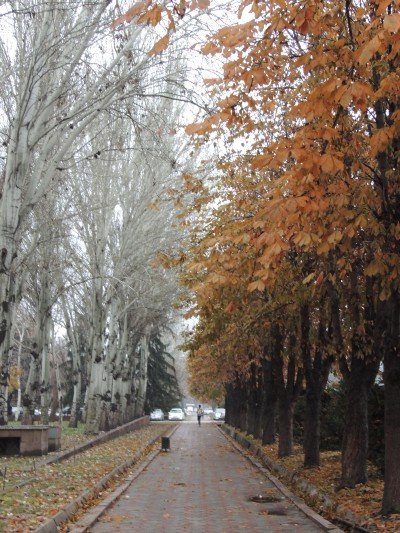
This alley is perhaps among the most beautiful and magic places I saw in Bishkek. The teen in the deep of the photo is actually jumping from a feet to another, just like we used to do when we were kids.
Nearly nobody speaks English, and the bulk of taxi drivers is under-qualified people having left their countryside to seek for a living in the capital. Which is why they have no idea whatsoever where you want to go — so, they ask you to tell them the way… Which is, erm, quite tricky for anyone coming to Bishkek for the first time ever. The people are however really nice yet straightforward (which may be seen as adversarial at times); the waiters and waitresses in restaurants stuff you with food and drinks as this is what hospitality means to them. Oh, and they still do these weddings in fancy restaurants with kitsch clothes and Western popmusic from the 1980s where everyone goes to the middle of the restaurants and dances. We bumped into one such happening, it was quite surreal for me to find the exact same scheme as back home more than a decade ago. And honestly? Really made me laugh and feel emotional again.
I have done my best to collect my impressions in a dedicated photoset: a concrete post-Soviet experience, in both senses of the term ‘concrete’.
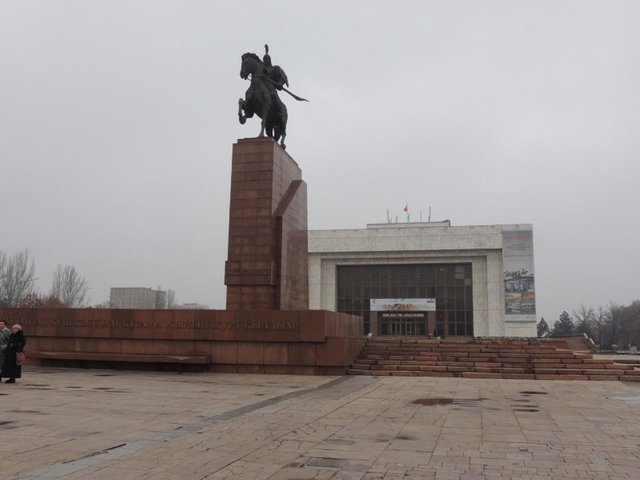
The statue of Knight Manas on Ala Too Square. The Ala Too Square used to be named Lenin Square, and the National History Museum used to be named Lenin Museum. The square dates back to 1984 and is just enormous, designed to both impress and intimidate.
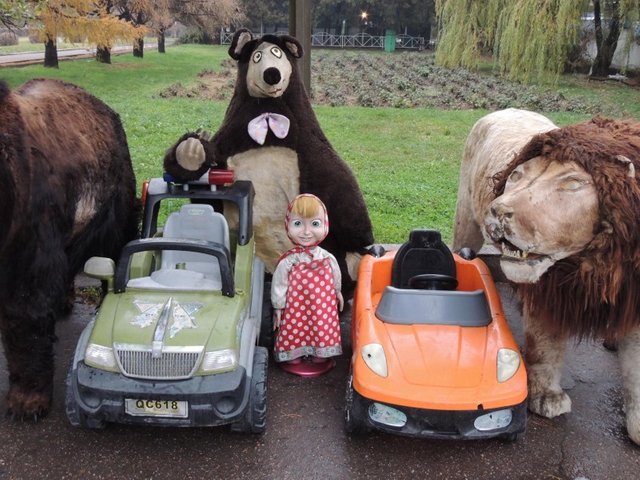
Walking down the road to the Statue of Freedom (used to be located on Ala Too Square). These animals and entertainment objects are aimed at kids. Seriously, whoever thought children would dig these thingies might as well seek professional help… These are SCARY.
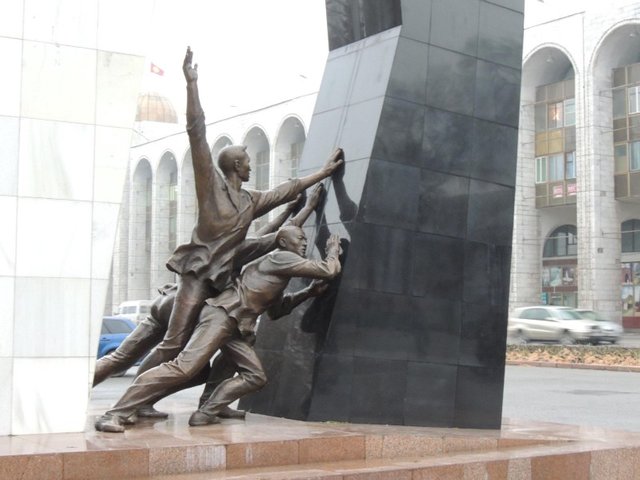
This monument celebrates the 2010 revolution. More on the 2010 revolution here.
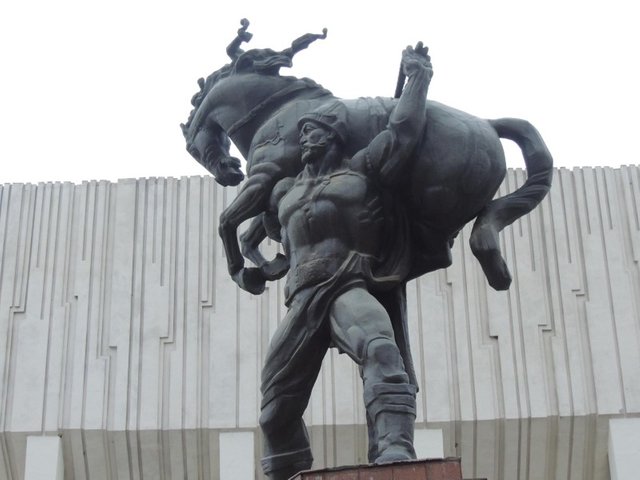
The Kojomkol statue in front of the Sports Palace. Kojomkol (1899–1955) is a famous giant (allegedly, 2.3 m tall) who was so strong and powerful that he would lift rocks—and his own horse—just for the fun of it.
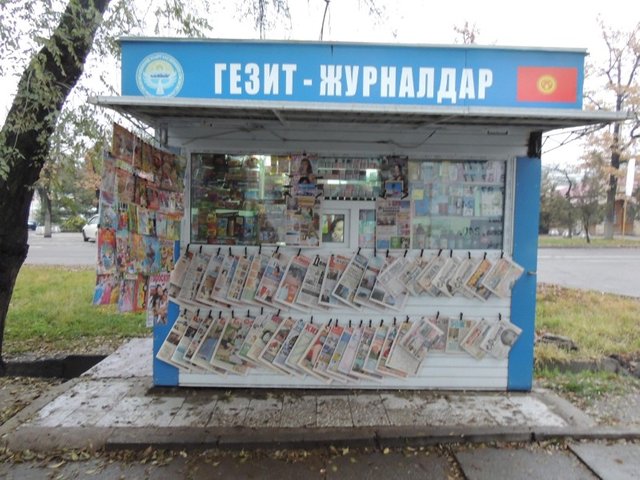
A typical newspapers kiosk.
NB: I didn't rework those photos, they really reflect the way the city looked when I took them. If it looks bleak and colourless to you, then you have grasped a big part of the feeling I had.
What was T-Rex's favorite number? -Ate!
To be fond of learning is near to wisdom; to practice with vigor is near to benevolence; and to be conscious of shame is near to fortitude. He who knows these three things
Keep up the great work @maliciarogue
Upvoted
Thanks, @dotersvilic!
Hi! This post has a Flesch-Kincaid grade level of 10.3 and reading ease of 58%. This puts the writing level on par with Michael Crichton and Mitt Romney.